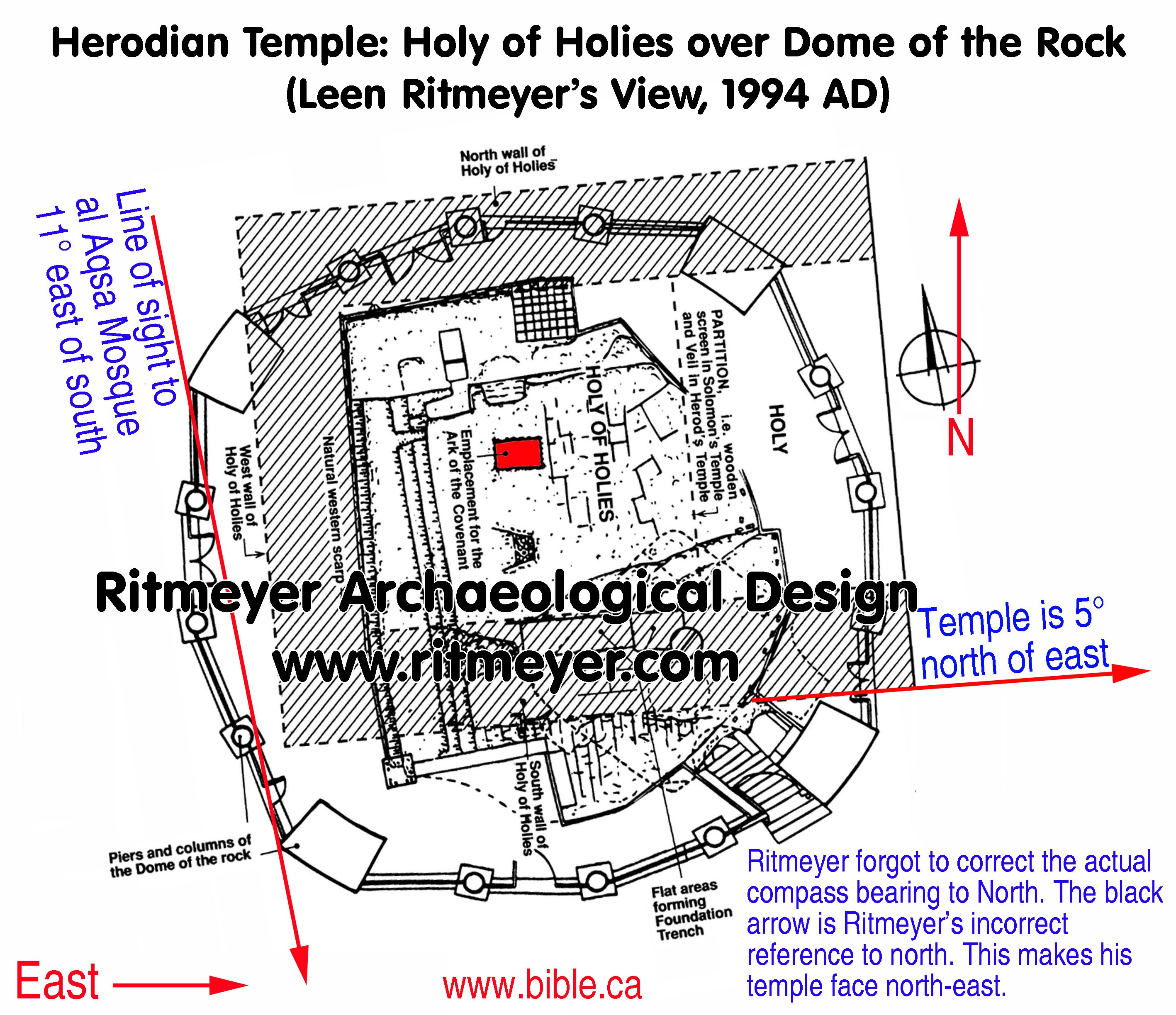Detailed high resolution photos of the Temple of Jupiter in Baalbek, Lebanon.
The Temple in Jerusalem over the threshing floor which is presently under the Al Kas fountain.
Introduction:
|
Detailed high resolution photos of the Temple of Jupiter in Baalbek, Lebanon.
|
A. The sequence from Herod's Temple, to Temple of Jupiter, to Dome of the Rock:



 .
. 






(letters in brackets fill out abbreviations)



Solomon's Quarry:
The entrance to the cave is just north of the Damascus Gate along the city wall. From the entrance under the city wall to the deepest point is 230 meters. Its widest point is 100 meters and the highest point from floor to roof is 15 meters. Although the cave cuts an almost direct line to the NW corner of the temple mount which is 335 meters from the entrance of the cave, no part of the cave is directly under the temple mount area, but falls 105 meters short. In other words, the closest point of the cave is still 105 meters away from the NW corner of the temple mount. The underground spring is due east of the "Freemasons Hall" and is near the lowest point of the cave. Josephus Flavius, refers to it as the "Royal Caverns." In the 10th century, the Damascus Gate was called "the Gate of the Grotto." In the 15th century, the cave was a textile storage are and "the Cotton Grotto." In the 16 century, the turks sealed the cave until it was discovered by Dr. Barclay while walking with his son and dog. The dog started digging at the entrance of the cave while tracking a fox. There is nothing in the Bible that connect Zedekiah with any kind of cave. The story in Jeremiah 39:4; 2 Kings 25:4 is often suggested, but clearly not related.


B. Additional factors for placing Herod's temple in this location:

C. Documentation from sources:
D. Some problems with Tuvia Sagiv's view:




Conclusion:
By Steve Rudd: Contact the author for comments, input or corrections.